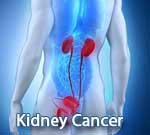Pineal Astrocytoma Cancer Treatment India
Introduction
Although pineal region neoplasms constitute only 0.3-2.7% of intracranial tumors, they are considered an important clinical entity because of their strategic location. Pineal region neoplasms can be classified into 3 major groups according to their cellular origin: (1) tumors of germ cell origin, (2) tumors of pineal cell origin, and (3) tumors of other cell origin. Tumors of germ cell origin include germinoma, mature teratoma, malignant teratoma, embryonal cell carcinoma, endodermal sinus tumor, choriocarcinoma, and mixed germ cell tumors. In addition, pineal germinomas and suprasellar germinomas are associated. Pineal germinomas are seen predominantly in males aged 0-20 years.
Pathophysiology
Herophilus discovered the pineal gland in 300 BC, and Galen labeled the gland konareion, meaning shaped like a pinecone. From a physiologic perspective, the pineal gland is centrally situated to serve as the center of a system of input, feedback, and regulation among diverse areas in the brain. Human physiologic systems evolve cyclically, with an internal awareness of diurnal and seasonal cycles. The pineal gland is responsible for both clock and calendar information. Through the production and release of numerous neurohormonal substances, the pineal gland integrates the signals it receives from the environment. Of the various substances produced by the pineal gland, melatonin is the most important. The control of melatonin synthesis by light makes the photoperiodicity of the pineal gland possible.
Many types of neoplasms can arise from the pineal region owing to the presence of various histologically unrelated tissues. Neoplasms include those of the pineal gland (eg, germ cell tumors, pineal cell tumors); thalamic quadrigeminal plate and tectum (eg, glioma); ependyma (eg, ependymoma); and velum interpositum and tentorium (eg, meningioma). Metastasis and vascular lesions have also been reported.
The most common pineal tumors are germinomas. Germinomas are most commonly seen in the pineal region, followed by the suprasellar region. Occasionally, they may be seen in the thalamus or basal ganglia. The cellular origin of germinoma usually is ascribed to primitive germ cells that are believed to migrate over wide areas of the embryo during early fetal life. Other germ cell tumors include embryonal cell carcinoma, endodermal sinus carcinoma, choriocarcinoma, and mixed germ cell tumor; however, these are much less common than germinomas.
The marker profile in cerebrospinal fluid or serum may be helpful in the differential diagnosis of germ cell tumors in the pineal region. Choriocarcinoma produces human chorionic gonadotropin, endodermal sinus tumor produces alpha fetoprotein, and embryonal cell carcinoma produces alpha fetoprotein and human chorionic gonadotropin. Mixed germ cell tumors may produce a combination of these tumor markers.
Frequency United States
Pineal region neoplasms constitute 0.3-2.7% of all intracranial tumors. Germinoma is the most common pineal region neoplasm, constituting approximately 40% of cases. Pineal germinomas occur more frequently in males and are more common than suprasellar germinomas.
International
A high incidence of pineal germinoma is found in Japan.
Mortality/Morbidity
Overall 5-year survival rate for patients with a pineal region or suprasellar germinoma treated with radiation is 59%.
The 5-year survival rate for patients aged 25 years or younger who do not undergo biopsy for a tumor in the pineal region is 81% after radiation treatment. Most of these tumors are probably germinomas.,.
Race
The incidence of pineal region neoplasms is high in Japanese individuals.
Sex
Pineal germinomas are seen predominantly in males, with a 9:1 male-to-female ratio.
Suprasellar germinomas affect males and females equally.
Age
Germinomas appear in persons aged 0-20 years.
Anatomy
The pineal gland is situated deep in the brain near critical neural and vascular structures. This position accounts for the neurologic symptoms that may occur when a mass lesion arises in the pineal gland. The pineal gland is located in the most posterior portion of the roof of the third ventricle. The posterior commissure is posterior and inferior to the pineal gland. Anterior to the pineal gland are the habenular trigone and the striae medullaris thalami. The splenium of the corpus callosum is situated above the pineal gland.
The pineal gland is located in the pineal recess of the third ventricle and surrounded by a pial layer. The substances produced by the pineal gland are released into the vascular system. Through numerous perforators, the medial posterior choroidal arteries are the major feeders of the gland. A large venous outflow proceeds through the internal cerebral veins and the vein of Galen and contributes to the distribution of substances synthesized in the pineal gland.
Presentation
Parinaud syndrome, a condition secondary to compression of the tectum, is the most important clinical presentation of pineal germinomas. The triad of Parinaud syndrome includes palsy of the upward gaze, dissociation of light and accommodation, and failure of convergence. In addition, findings secondary to hydrocephalus resulting from aqueductal compression are seen. Pineal germinomas may be associated with precocious puberty in male patients.
Preferred Examination
MRI is the preferred imaging modality. MRI enables the accurate delineation of pineal masses before surgery. MRI allows true pineal masses to be distinguished from parapineal masses that impinge on the pineal gland.
Limitations of Techniques
MRI is not perfect in the detection of calcifications. CT may be needed to evaluate a calcified pineal gland that is associated with a pineal germinoma or tumor calcification associated with other neoplasms in the pineal region.
Differential Diagnoses- Astrocytoma, Brain
- Ganglioglioma
- Meningioma, Brain
- Other pineal germ cell tumors
- Pineocytoma
- Pineoblastoma
- Metastasis





































